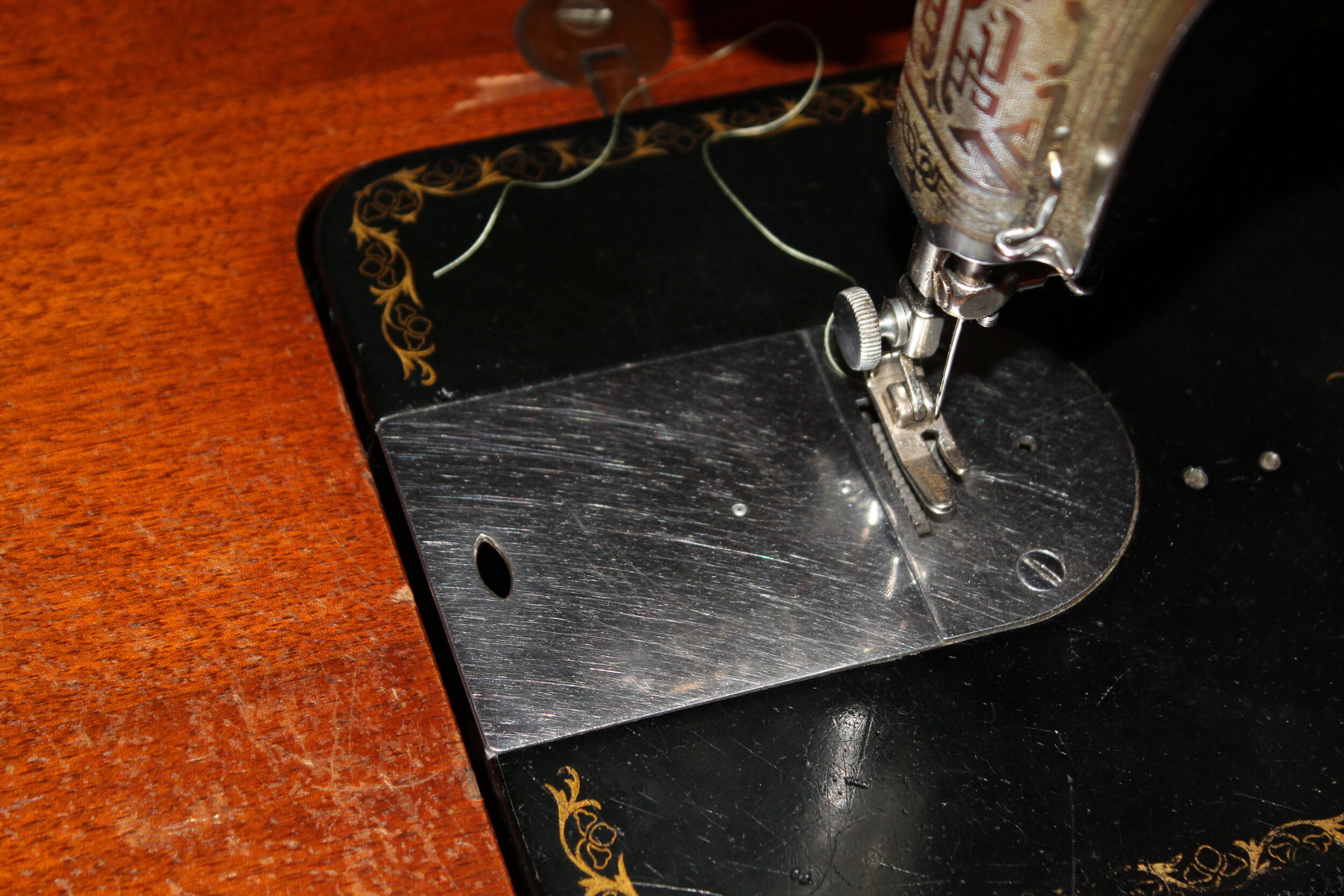Earlier this week I was looking at ordering an English version of the 15-91 manual for reference from Etsy (as I mentioned earlier there is a free online copy, but I like working with a paper version). The listing also advertised some bobbin cases and bobbins. While I didn’t necessarily need these things, I also figured it wouldn’t hurt to have some extra on hand, so I went ahead and ordered them. I was not prepared for the seller to come back to me and mention that she had both 11 o’clock bobbin cases and 1 o’clock bobbin cases, and which would I like to have. It had not occurred to me that there might me more than one type of bobbin case, and I wasn’t sure at first which I would need for the 15-91.
Class 15 Bobbins
Before we get to the bobbin cases, lets talk briefly about the bobbins themselves. 15-91 uses class 15 bobbins. This appears to be standard across all the Singer Series 15 machines. And not only that, class 15 bobbins are one of the three major bobbins used today. They are available in both plastic and metal. I have seen some in the vintage community recommend metal over plastic, but that seems more due to personal preference rather than any issue with using plastic bobbins on the 15-91. You may also see slightly different styles in class 15 bobbins (i.e. holes vs solid as you can see in the photo below).
Bobbins that came with my machine
One important thing to note for the 15-91, is that if the sides of your bobbin are warped (i.e. not perfectly parallel), you will struggle to wind the bobbin with thread. I speak from personal experience, as my partner’s parents and I spent a solid 45 minutes trying to figure out why we couldn’t wind the bobbin before we realized the problem was the bobbin itself. So I definitely recommend to check the bobbin first if you are having issues before assuming something is wrong with your machine.
15-91 Bobbin case
The bobbin case is what holds the bobbin in your machine while you sew. On your 15-91 you should be able to see it (or at least see where it should be placed if it isn’t already there) by sliding open a metal panel by the needle plate. If you are having trouble seeing it and are on a sewing cabinet, you could also lift your machine up.
Location of bobbin case when machine is lifted up
Bobbin case when removed from machine
When you remove the bobbin case for examination, you can see that there is arm sticking up towards the left. It is the position of this arm that determines if your bobbin case is 11 o’clock or 1 o’clock. In this case, this is a 11 o’clock bobbin case and as you probably have figured out by now, only the 11 o’clock bobbin case will work on the 15-91. When I check the comparison chart of the 15 series, it looks like this 11 o’clock style is unique to the 15-75, 15-88, 15-89, 15-90, 15-91, and 15-125 machines in the 15 series. Because of this, you will want to make sure you are getting the right bobbin case for your 15-91 (part #125291).




